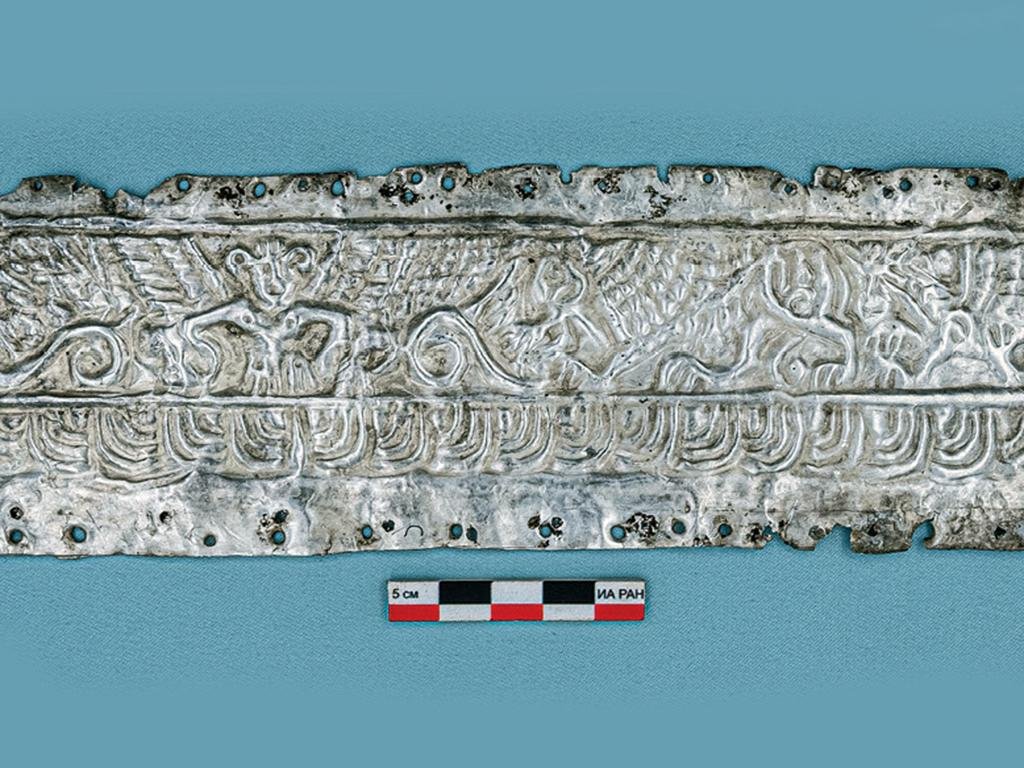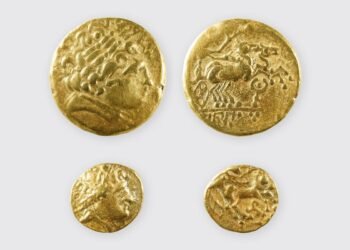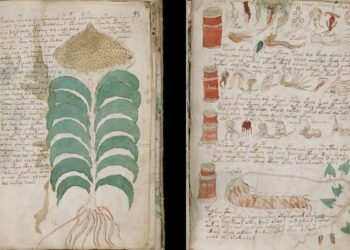Archaeologists have unearthed an exquisite silver plate adorned with intricate depictions of winged gods and griffins in a burial ground located in Russia’s Voronezh region.

It is the first-known object depicting figures from the Scythian pantheon discovered within a 2,400-year-old tomb belonging to an ancient Eurasian warrior at a site known as Devista V. This site is situated quite distant from the primary Scythian centers, making the discovery all the more extraordinary.
The Scythians, originally of Iranian descent, were a group of nomadic people whose history dates back to as early as the 9th century BCE.
They embarked on a westward migration from Central Asia, eventually settling in southern Russia and Ukraine during the 8th and 7th centuries BCE. These ancient nomads have left a significant mark in history due to their intriguing culture and way of life.
The archaeological site in question houses a total of 19 burial mounds, forming an ancient cemetery with deep historical significance. The silver plate, now capturing the fascination of experts, was found within one of these burial mounds.
Remarkably, it was situated in an area that had been partially pilfered over time, but despite the ravages of time and tomb robbers, it was the skill and dedication of the archaeologists that led to its discovery. The plate was located near the skeletal remains of a male who, through analysis, was determined to have been between the ages of 40 and 49 at the time of his demise.
The silver plate itself is a rectangular piece, measuring 34.7cm in length and 7.5cm in width at its midpoint. This ancient artifact was positioned in the northeastern section of the grave, a significant distance from other objects that were also interred alongside the deceased warrior.
Notably, the plate seems to have originally been attached to a wooden base through the use of small silver nails, though the wooden component has largely disintegrated over the centuries.
The central portion of the plate presents a captivating portrayal of a winged figure adorned with an ornate horned headdress or crown. This figure is believed to be a representation of the goddess of animal and human fertility, with potential associations to deities such as Argimpasa, Cybele, or the Great Goddess. The goddess is elegantly surrounded by mythical creatures, creating a composition that seamlessly melds elements of Asian and Greek artistic traditions.

A distinctive aspect of the silver plate is the presence of heraldic depictions on its left side, showcasing syncretic creatures. These hybrid beings combine features from various species, resulting in enigmatic and captivating imagery. Two round buckles affixed to the plate’s right side feature anthropomorphic figures adorned with crowns, each flanked by a pair of griffins.
This discovery, while considered a burial good for the warrior, is a rare find within the realm of Scythian archaeology. To date, very few silver plates with similar attributes have been uncovered in the numerous Scythian burial sites that have been investigated, further emphasizing the exceptional nature of this find.





















